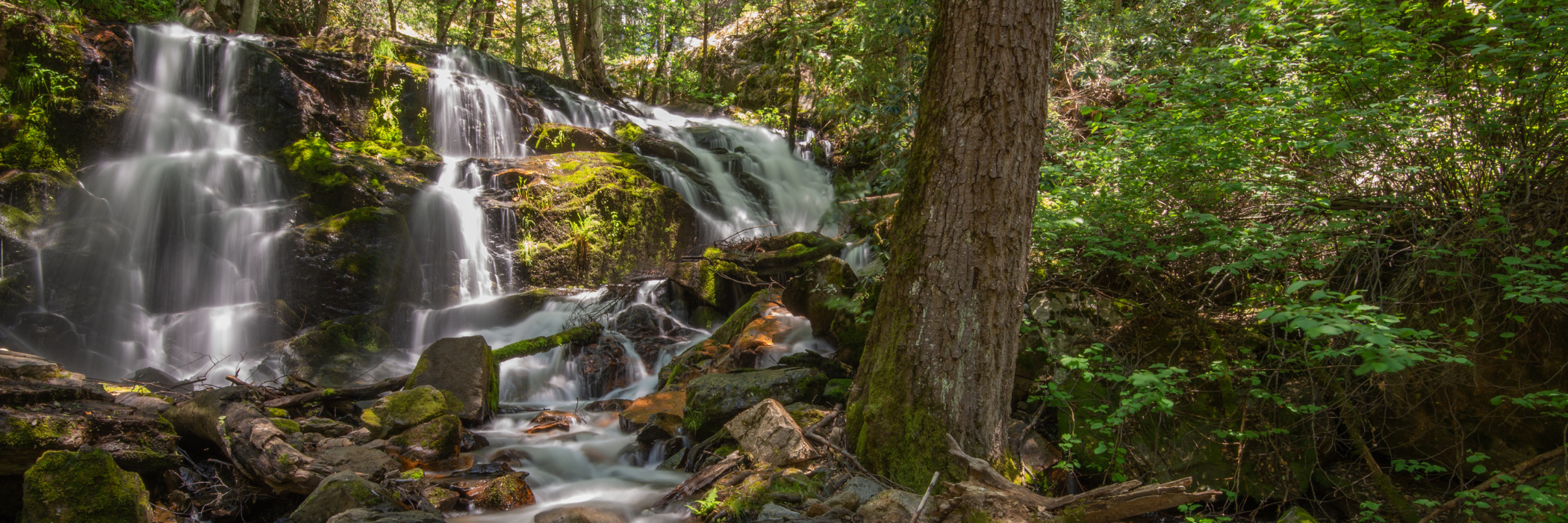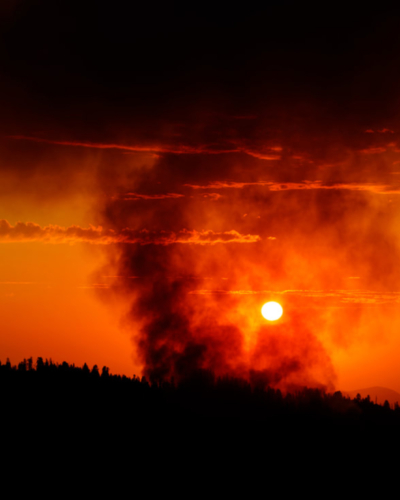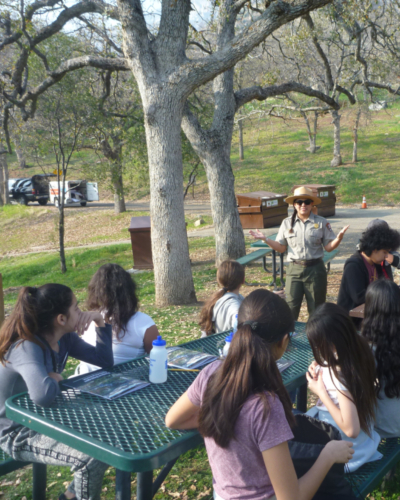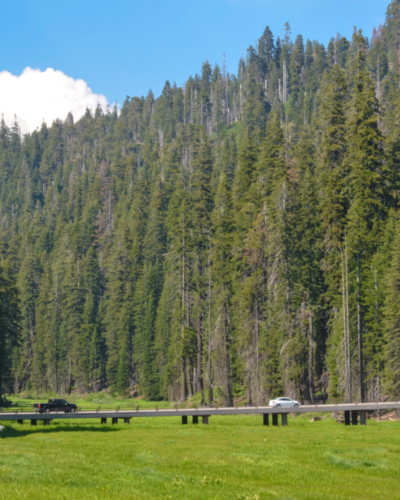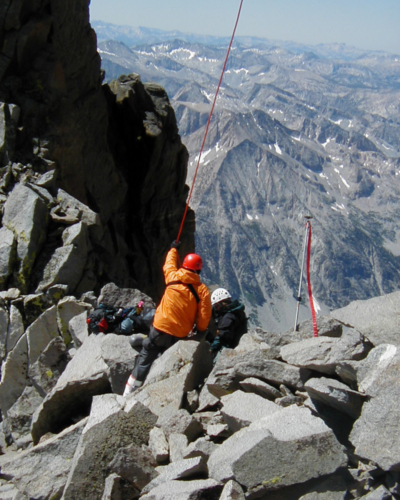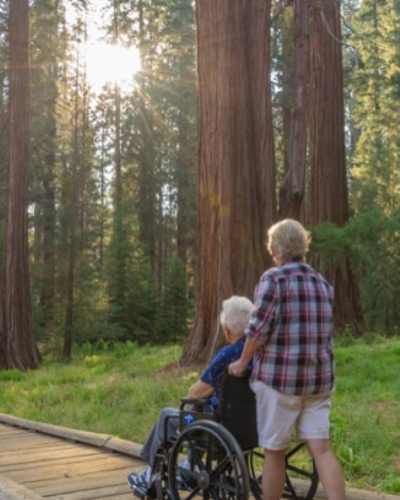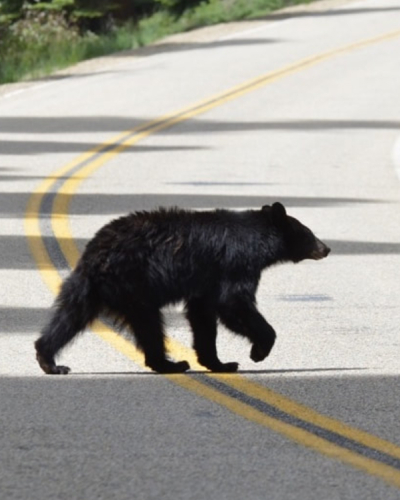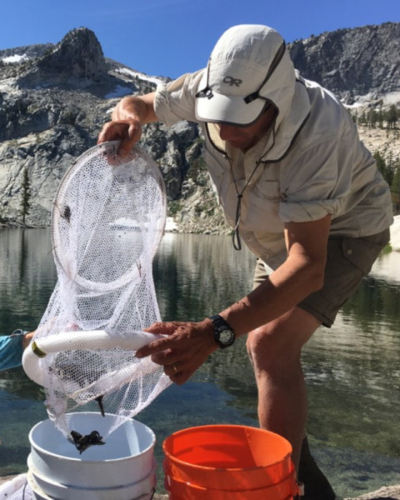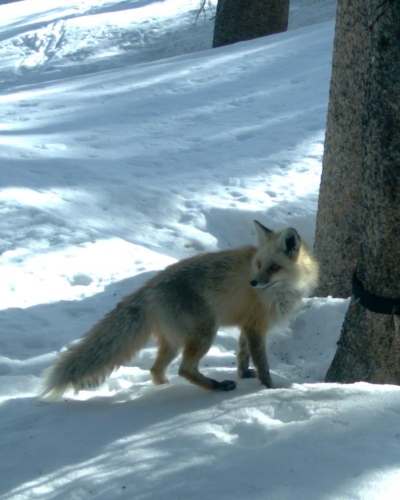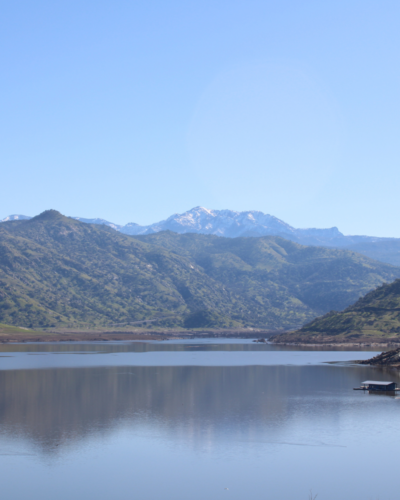Support A Program
What Does Sequoia Parks Conservancy Do?
Sequoia Parks Conservancy (SPC) is built on decades of support for Sequoia and Kings Canyon National Parks. This legacy demonstrates a longstanding commitment and contribution to the parks and their surrounding communities, including the US Army Corps of Engineers at Lake Kaweah.
SPC is a key connection point with park visitors and provides important services, educational programs, and funding in support of park priorities.

KNP Complex Fire Recovery Fund
The KNP Complex Fire Recovery Fund has already reached 75% of its $1 million goal. Your generous donation will help us cross the finish line to bring renewal to fragile ecosystems destroyed by the recent wildfires.
KNP Complex Fire Recovery Fund
The KNP Complex Fire burned through 16 groves and is estimated to have killed between 1,300 and 2,400 giant sequoias over four feet in diameter. But there is still hope. The KNP Complex Fire Recovery Fund has already reached 75% of its $1 million goal. Your generous donation will help us cross the finish line to bring renewal to fragile ecosystems destroyed by the recent wildfires. Please continue your much-needed support to protect our fragile resources: trees, wildlife, meadows, and more, for future generations.
Education & Outreach
The future stewardship of Sequoia and Kings Canyon Parks, requires meaningful outreach to future generations. Sequoia Parks Conservancy funds Rangers in the Classroom, summer internships, and other service-learning programs that support outdoor learning for K-12 schools in the San Joaquin Valley.
Education & Outreach
Ensuring the future stewardship of Sequoia and Kings Canyon Parks requires meaningful outreach to future generations. We realize that bringing nature and the parks into local classrooms is vital to creating meaningful, lifelong connections between youth and the parks. SPC funds Rangers in the Classroom, summer internships, and other service-learning programs that support outdoor learning for K-12 schools in the San Joaquin Valley.
Resource Management & Science
We work steadily, patiently, and enthusiastically to restore imperiled wildlife species, important habitats, and the natural processes that sustain them. In supporting Resource Management and Science, you, too, can be a park caretaker.
Resource Management & Science
We are the caretakers at Sequoia and Kings Canyon National Parks. We work steadily, patiently, and enthusiastically to restore imperiled wildlife species, important habitats, and the natural processes that sustain them.
As constant and faithful guardians, we have an extremely important job to protect and preserve the parks’ natural and cultural resources. We do this through a robust portfolio of programs that ranges from meadow restoration to wildlife management. You may have seen some of the National Park Service’s work during your time here. Halstead Meadow was restored and is not only beautiful but also a key indicator in what makes the Sierra Nevada vibrant and diverse. Caring for the parks also entails considering the realities of climate change. For example, managing sequoias that are more than 1,000 years old in a rapidly changing environment can be a monumental task. During years of the recent drought, park scientists observed drought stress in these trees. Support to our sequoia monitoring and conservation fund makes this easier. In supporting Resource Management and Science, you, too, can be a park caretaker.
Search & Rescue
Rangers at Sequoia and Kings Canyon National Parks conduct nearly 150 search and rescue operations annually for visitors with emergency needs. Donations are used to support these lifesaving efforts.
Search & Rescue
The parks are busier than ever, with more than two million visitors annually. Rangers at Sequoia and Kings Canyon National Parks conduct nearly 150 search and rescue operations annually for visitors with emergency needs. Donations are used to support these lifesaving efforts.
Sequoia Conservation Fund
We strive to preserve some of the mightiest organisms on the planet, the giant sequoias, and the biodiversity of the vast Sierra Nevada. You can help preserve this magnificent species by donating to the Sequoia Conservation Fund.
Sequoia Conservation Fund
We strive to preserve some of the mightiest organisms on the planet, the giant sequoias, and the biodiversity of the vast Sierra Nevada. You can help preserve this magnificent species by donating to the Sequoia Conservation Fund. Ninety percent of your donation directly supports the cutting-edge research and science being done at Sequoia and Kings Canyon National Parks to better understand and protect giant sequoias into the future.
Trails & Accessibility
Sequoia and Kings Canyon National Parks have more than 1,000 miles of trail. Construction and maintenance of these trails are made possible by donors like you. So please, show your support for Trails and Accessibility.
Trails & Accessibility
Sequoia and Kings Canyon National Parks have more than 1,000 miles of trail. With endless options, you could take a leisurely stroll through the Crescent Meadow Loop Trail or challenge yourself to continue for over 70 miles of trail through the Sierra Nevada and attempt to summit Mt. Whitney, the tallest mountain in the contiguous United States with an elevation of 14,505 feet.
With more than 2 million visitors each year, the park’s trail system experiences its fair share of wear and tear. So what happens when rock slides in the wilderness or restoration work need to be done to blend in with historic work?
The Sequoia and Kings Canyon Trails Crew works relentlessly to keep our trails open and clear so that park visitors can have a safe and memorable experience. And since Sequoia and Kings Canyon are 98% wilderness, crews often travel to remote locations and stay there for months. They use mostly primitive tools – sledgehammers, pry bars, shovels, and handsaws. It is truly backbreaking work.
They also ensure everyone can enjoy the parks regardless of ability. In fact, we have five dedicated trails that are wheelchair-accessible:
General Sherman Tree Trail (Giant Forest)
Hazelwood Nature Loop (Giant Forest)
Big Trees Trail (Giant Forest)
Roaring River Falls (Cedar Grove)
Muir Rock Trail (Cedar Grove)
Construction and maintenance of these trails are made possible by donors like you. So please, show your support for Trails and Accessibility. The Trails Crew, their expertise, and their commitment to keeping the parks in pristine condition for all visitors are truly beyond measure.
Wildlife Management
Sequoia Parks Conservancy provides financial and logistical support for vital programs that preserve park wildlife. Protecting black bears from human conflict, reintroducing Sierra Nevada bighorn sheep to the Sierra Nevada Crest, and recovering critical habitats for endangered species are some current projects funded by Sequoia Parks Conservancy.
Wildlife Management
Sequoia Parks Conservancy provides financial and logistical support for vital programs that preserve park wildlife. Protecting black bears from human conflict, reintroducing Sierra Nevada bighorn sheep to the Sierra Nevada Crest, and recovering critical habitat for endangered mountain yellow-legged frogs are some current projects funded by Sequoia Parks Conservancy.
Save The Frogs
The mountain yellow-legged frog is an endangered species on the brink of completely disappearing from the parks. Restoring mountain yellow-legged frog populations is a high priority for Sequoia and Kings Canyon National Parks and Sequoia Parks Conservancy.
Save The Frogs
The mountain yellow-legged frog is an endangered species on the brink of completely disappearing from the parks, primarily due to non-native fish, disease caused by an amphibian fungus, and global climate change. SPC helped eradicate non-native fish species and reintroduce over 200 mountain yellow-legged frogs to mountain lake ecosystems in Sequoia and Kings Canyon National Parks.
Two species of mountain yellow-legged frogs (Rana muscosa and Rana sierrae) occur in Sequoia and Kings Canyon National Parks and are integral to high mountain lake systems. These once-abundant amphibians play a critical role in maintaining biodiversity in these ecosystems but they have since disappeared from more than 92% of historic sites in the Sierra Nevada, with similarly large losses in the parks. Non-native trout and diseases caused by amphibian chytrid fungus are the primary reasons for their decline.
Restoring mountain yellow-legged frog populations is a high priority for Sequoia and Kings Canyon National Parks and Sequoia Parks Conservancy. A list of urgent needs for the frog restoration program has been developed and includes select frog recovery actions for transport, antifungal medication, disease testing, and supplies needed to salvage 200 animals from two vulnerable populations and conduct zoo-based antifungal treatment, captive rearing, and immunization before reintroduction back to the wild.
Sierra Nevada red fox
The endangered Sierra Nevada red fox has been detected in Sequoia and Kings Canyon National Parks for the first time in a very long time. Your donation can help Wildlife Management ensure they have the proper equipment and funding to continue their critical work.
Sierra Nevada red fox
The endangered Sierra Nevada red fox (Vulpes vulpes necator) has been detected within the boundaries of Sequoia and Kings Canyon National Parks for the first time in a very long time! Trail cameras caught glimpses of these foxes in the last year, at very high elevations, near the crest of the Sierra Nevada – the first verifiable occurrences in this area since the 1930s.
Want to help the Sierra Nevada red fox? Donate to Sequoia Parks Conservancy. Your donation can help Wildlife Management ensure they have the proper equipment and funding to continue their critical work.
The endangered Sierra Nevada red fox has been detected in Sequoia and Kings Canyon National Parks for the first time in a very long time. Your donation can help Wildlife Management ensure they have the proper equipment and funding to continue their critical work.
Lake Kaweah Watershed
Sequoia Parks Conservancy assists the interpretive staff by staffing a small store at the lake and providing seasonal interpretive services. Your donations help maintain our 24/7 Lake Kaweah Webcam and provide funds for projects and programs at the lake.
Lake Kaweah Watershed
Connected to Sequoia National Park by the powerful Kaweah River, Lake Kaweah (est. 1962) is a reservoir situated in the foothills of the Sierra Nevada with a window to the tall peaks of Sequoia National Park. Operated by the U.S. Army Corps of Engineers, it provides ample recreation opportunities for water skiing, fishing, kayaking, bird watching, or just cooling off in the heat of summer. Lake Kaweah is home to Terminus Dam and a hydroelectric power plant, and provides flood control for the Tulare Lake Basin. Sequoia Parks Conservancy assists the interpretive staff by staffing a small store at the lake and providing seasonal interpretive services. Your donations help maintain our 24/7 Lake Kaweah Webcam and provide funds for projects and programs at the lake.
Historic Preservation
Funding for this category supports the National Park Service's work in preserving and managing the historical and cultural landscape in Sequoia and Kings Canyon National Parks for present and future generations.
Historic Preservation
In 2024 Sequoia Parks Conservancy is raising funds to preserve two structures in the park. Beetle Rock Education Center, a historic building constructed in 1940, serves as a public education center, meeting space, training location, and administrative area. The facility needs upgrades and preventative maintenance to maintain its architectural and structural integrity and functionality. Following a construction and cultural resource assessment, specific project work will be identified, prioritized, scheduled, and performed. Additionally, Sequoia Parks Conservancy plans to replace the Crystal Cave ticket booth, a key entry point for around 50,000 annual visitors exploring the underground wonders. By streamlining visitor access, improving operational efficiency, and enhancing the overall experience, the Conservancy aims to make public access and experience safe, memorable, and enjoyable for park visitors.
